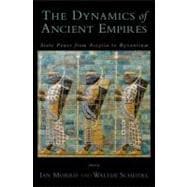
What is included with this book?
| Contributors | p. xi |
| Ancient States, Empires, and Exploitation: Problems and Perspectives | p. 3 |
| The Neo-Assyrian Empire | p. 30 |
| The Achaemenid Empire | p. 66 |
| The Greater Athenian State | p. 99 |
| The Political Economy of the Roman Empire | p. 178 |
| The Byzantine Empire | p. 205 |
| Sex and Empire: A Darwinian Perspective | p. 205 |
| Bibliography | p. 325 |
| Index | p. 369 |
| Table of Contents provided by Ingram. All Rights Reserved. |
The New copy of this book will include any supplemental materials advertised. Please check the title of the book to determine if it should include any access cards, study guides, lab manuals, CDs, etc.
The Used, Rental and eBook copies of this book are not guaranteed to include any supplemental materials. Typically, only the book itself is included. This is true even if the title states it includes any access cards, study guides, lab manuals, CDs, etc.